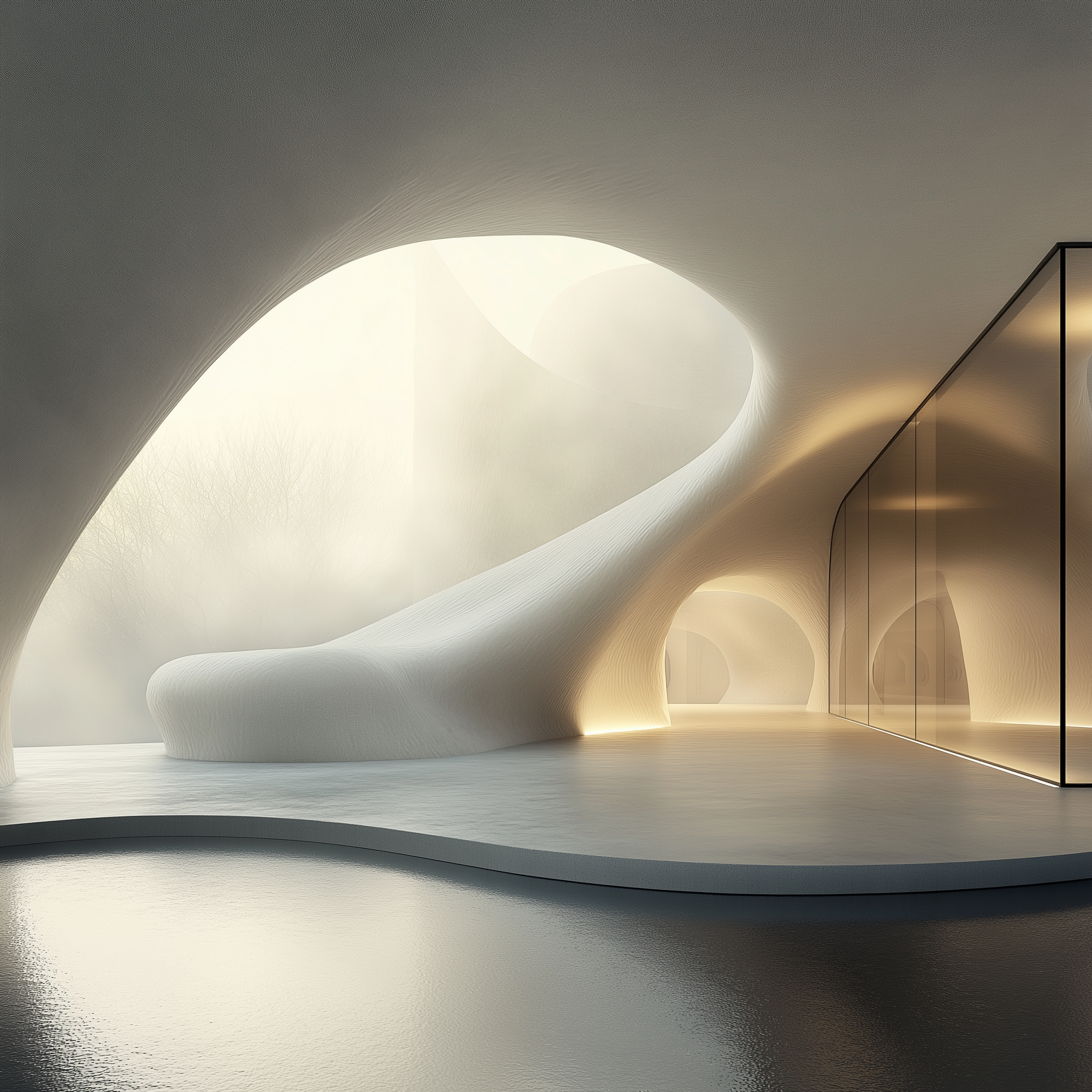Spaces That Heal: Designing Architecture That Feels and Evolves
What makes a space feel like refuge? What allows us to soften, to breathe more slowly, to feel held by the environment—not overwhelmed by it?
In a world of overstimulation, where visual impact and performance dominate design conversations, I believe we need to return to a deeper question: Can architecture care for us?
Not metaphorically, but tangibly. Not just in structure, but in experience.
When I design—whether physical or digital—I don't begin with form. I begin with the nervous system. With the body. With the emotional memory of space. Because the way a space makes us feel determines how we inhabit it, how we relate to it, and ultimately, how we relate to ourselves.
ARCHITECTURE AS AN EXTENSION OF THE NERVOUS SYSTEM
Neuroarchitecture teaches us what we’ve always felt intuitively: space impacts biology. Natural light regulates our circadian rhythm. Organic curves lower our heart rate. A rhythm of silence, pause and texture creates coherence between mind and body.
This is not abstract. It’s measurable.
Yet most of what we build still prioritizes order over emotion, function over feeling. We design as if humans are static—when in reality, we are cyclical, sensitive, evolving.
A healing space doesn’t fix you. It doesn’t impose. It listens. It adjusts. It allows.
These spaces aren’t just buildings. They are extensions of the emotional body.
Organic architectural space inspired by emotional healing | Lucia Silva Studio
IN THE METAVERSE, SPACE BECOMES BREATH
Digital architecture offers a new terrain—one not bound by gravity, permanence or cost. But that freedom means nothing if it lacks emotional depth.
I’m interested in how immersive environments can become emotionally intelligent. How a virtual refuge could know when you’re anxious—lower the light, soften the textures, slow the sound. Not to entertain, but to accompany.
The metaverse doesn’t have to be a spectacle. It can be a sanctuary. It can be a place that holds space for what we feel—not just what we do.
This is not a dream. It’s the new language of architecture I’m exploring—where materials are digital but intentions are deeply human.
Curved architecture designed to support emotional wellbeing | Lucia Silva Studio
HEALING IS NOT LINEAR—DESIGN SHOULDN’T BE EITHER
Healing isn’t a straight line. It spirals, pauses, repeats, shifts. Architecture should reflect that rhythm.
A space designed for well-being is one that evolves with you. That knows presence is more important than perfection. That welcomes stillness as much as movement.
To design for healing is to design without needing to resolve. It’s to offer softness where the world is hard. Breath where life feels tight. Pause where time feels rushed.
A NEW KIND OF DESIGN
We don’t need louder spaces. We need spaces that listen. That adapt to emotional complexity. That don’t simply house life, but nurture it.
This is the future of design I believe in: One that doesn’t dominate, but supports. That doesn’t just function—but feels.
Spaces that live. Spaces that heal.
Digital immersive environment with soft textures and calming light | Lucia Silva Studio



